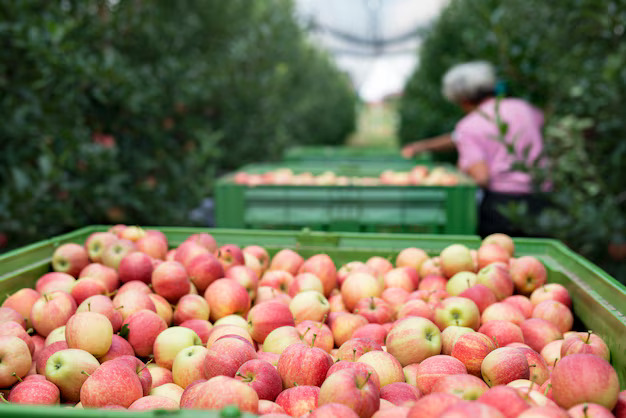Apple farming in South Africa holds significant economic importance, with the country being one of the leading producers of apples in the Southern Hemisphere. To meet the demands of both domestic and international markets, apple growers continuously strive to enhance quality and yield through the implementation of effective techniques and best practices. From orchard management to post-harvest handling, here are some strategies for maximizing quality and yield in apple farming in South Africa:
- Variety Selection:
Selecting the right apple varieties is crucial for achieving optimal quality and yield. Consider factors such as climate suitability, market demand, disease resistance, and fruit characteristics when choosing apple cultivars. Popular varieties grown in South Africa include Golden Delicious, Granny Smith, Pink Lady, Fuji, and Cripps Pink. - Site Selection and Soil Preparation:
Choose sites with well-draining soils, adequate sunlight, and good air circulation to promote healthy apple tree growth. Conduct soil tests to assess nutrient levels, pH balance, and soil texture, and amend the soil as needed to create optimal growing conditions for apples. Proper soil preparation is essential for establishing a strong root system and ensuring robust tree growth. - Planting Techniques:
Adopt proper planting techniques to ensure successful establishment of apple orchards. Plant trees during the dormant season, typically in winter, to allow for root development before the onset of the growing season. Maintain proper spacing between trees and rows to optimize light penetration, airflow, and access for orchard management practices. - Irrigation Management:
Implement efficient irrigation systems to provide consistent moisture to apple trees throughout the growing season. Drip irrigation or micro-sprinkler systems are ideal for delivering water directly to the root zone while minimizing water wastage. Monitor soil moisture levels regularly and adjust irrigation schedules based on weather conditions and plant requirements. - Fertilization and Nutrient Management:
Develop a balanced fertilization program based on soil test results and apple tree nutritional requirements. Apply fertilizers containing nitrogen, phosphorus, potassium, and micronutrients in appropriate quantities and timing to support healthy tree growth, flowering, and fruit development. Incorporate organic amendments and cover crops to improve soil fertility and structure over time. - Pruning and Training:
Regular pruning and training are essential for shaping apple trees, optimizing fruit production, and maintaining orchard health. Prune trees during the dormant season to remove dead, damaged, or diseased branches, as well as to thin out excessive growth and encourage fruiting wood formation. Train trees to a desired shape, such as central leader or open center, to facilitate sunlight penetration and fruit ripening. - Pest and Disease Management:
Implement integrated pest management (IPM) practices to control pests and diseases effectively while minimizing reliance on chemical pesticides. Monitor orchards regularly for signs of pests, such as codling moth, apple maggot, and aphids, as well as diseases like apple scab, powdery mildew, and fire blight. Use cultural practices, biological controls, and resistant varieties to manage pest and disease pressure sustainably. - Thinning and Fruit Management:
Thinning fruit clusters is necessary to promote uniform fruit size, reduce competition among developing fruits, and prevent biennial bearing. Thin out excess fruit during the early stages of development to achieve optimal spacing and fruit quality. Implement fruit bagging or netting techniques to protect apples from sunburn, pests, and physical damage during the ripening period. - Harvesting and Post-Harvest Handling:
Time harvests carefully to ensure apples are picked at the peak of ripeness and flavor. Harvest apples when they reach the desired color, size, and firmness, typically by hand or with mechanical harvesting equipment. Handle apples gently during harvest to minimize bruising and damage, and promptly cool and store harvested fruit to preserve freshness and extend shelf life. - Continuous Monitoring and Evaluation:
Regularly monitor orchard performance, fruit quality, and yield metrics to assess the effectiveness of farming practices and identify areas for improvement. Keep detailed records of orchard inputs, pest and disease occurrences, harvest yields, and post-harvest losses to track progress and make informed decisions for future orchard management.
By implementing these techniques and best practices, apple growers in South Africa can maximize quality and yield, enhance profitability, and sustainably meet the demands of domestic and international markets for high-quality apples. Continued investment in research, innovation, and education is essential for supporting the development of the apple industry and ensuring its long-term success and competitiveness in the global market.
Join 'Farmers Mag' WhatsApp Channel
Get the latest Farming news and tips delivered straight to your WhatsApp
CLICK HERE TO JOIN






